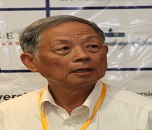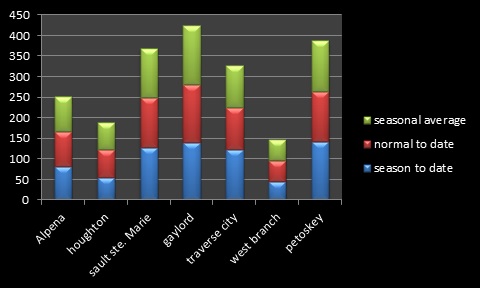About the conference
Welcomes you to attend the 14th World Conference on Earth Science & Geology November 13-14, 2025 Paris, France. The relative novel nature of the conference is to bring the advancement in the field of utilization of natural resources. We cordially invite all the participants interested in sharing their knowledge and research in the arena of Earth Science and Environmental sciences.
Earth Science 2025 is the integration of new technologies in the field of environmental science to help Environmental Professionals harness the full potential of their practice. It involves the use of tools and technologies to achieve a certain degree of publicity and broaden the reach of the practice and the practitioner. The conference is a rare opportunity for all individuals of the environmental community to upgrade their know- how of the latest technologies & strategies
Young Scientist Benefits
-
Our conferences provide best Platform for your research through oral presentations.
-
Share the ideas with both eminent researchers and mentors.
-
Young Scientist Award reorganization certificate and memento to the winners
-
Young Scientists will get appropriate and timely information by this Forum.
-
Platform for collaboration among young researchers for better development
-
Award should motivate participants to strive to realize their full potential, which could in turn be beneficial to the field as whole.
Why to attend?
Earth Science 2025 has been designed with a twofold objective in mind. The main theme of the conference is "Let’s Unite for a Greener Future and a Healthier Earth” which covers a wide range of critically important sessions.
The event aims at bringing the advancement in the field of Earth Science, Climate Change, Environmental Science, and GIS and Remote Sensing and also lays a special emphasis at Educating and informing environmental researcher, industry professionals with the latest knowledge of technologies that can be applied to counter the economic under-evaluation ecologist may face in their practice.
To add to its promise, the venue of the event has been selected after much research to assure that the event is being held in one of the hotspots for the concerned field, therefore attendance is expected to be astounding, both in quality and quantity. The variety of prospective audience includes figures of academic excellence, interested industrialists, Students, exhibitors and eminent faces from the world of marketing thus enabling the sponsors a unique chance to choose from a pool of outstanding scopes for expansion of their business, new project undertaking and recruitment. All these factors combined and several more make Earth Science 2025 a “must attend” earth science conference.
A Unique Opportunity for Advertisers and Sponsors at this International event.
For sponsorship opportunities:
https://earthscience.earthscienceconferences.com/sponsors.php
Sessions/Tracks
Track 1: Earth Science
Earth science or geoscience includes all fields of science associated with the world Earth. This is often a branch of science managing the physical constitution of the world and its atmosphere. Earth science is that the study of our planet’s physical characteristics, from earthquakes to raindrops, and floods to fossils. The numerous purpose of the world sciences is to acknowledge the present capabilities and therefore the past evolution of the world and to use this information, whereby acceptable, for the advantage of human race. Some earth scientists use their information of the world to find and develop energy and natural resource. Others study the impact of human action on Earth's environment, and style ways to protect the world.
Track 2: Climate Change
Climate change also called global warming, refers to the rise in average surface temperatures on Earth. Climatology, the science of Climate and its relation to plant and animal life, is important in many fields, including agriculture, aviation, medicine, botany, zoology, geology, and geography. Changes in Climate affect, for example, the plant and animal life of a given area. Climatology, the science of Climate and its relation to plant and animal life, is important in many fields, including agriculture, aviation, medicine, botany, zoology, geology, and geography. Changes in Climate affect, for example, the plant and animal life of a given area.
Track 3: Atmospheric Chemistry
The chemical composition of the atmosphere has been changing rapidly over the last several decades. Global changes research has been successful in developing a scientific understanding of several of these changes such as stratospheric ozone depletion. The assessment and understanding of other problems such as tropospheric ozone and aerosols and their roles in climate and chemical processes remain largely inadequate.
Track 4: Pollution Control
Pollution is the presence of a pollutant in the environment and is often the result of human actions. Pollution has a detrimental effect on the environment. Animals, fish and other aquatic life, plants and humans all suffer when pollution is not controlled. In other words, Pollution is the introduction of contaminants into the environment that causes harmful and toxic effects to living things. Pollution can take the form of chemical substances or energy, such as noise, heat or light. Pollution is often classified as point source pollution or non-point source pollution. Noise pollution, soil pollution and light pollution too are the damaging the environment at an alarming rate. Things as simple as light, sound and temperature can be considered pollutants when introduced artificially into an environment. Air pollution is by far the most harmful form of pollution in our environment. Air pollution is cause by the injurious smoke emitted by cars, buses, trucks, trains, and factories, namely sulphur dioxide, carbon monoxide and nitrogen oxides.
Track 5: Ecology & Ecosystems
Expectation of future worldwide natural changes requires a logical appraisal of the present state of earthly and marine biological communities and a comprehension of expansive scale earthbound and marine environmental procedures. Integrative earth framework models are imperative instruments for acclimatizing and requesting this environmental data.
Track 6: Carbon Cycle
The carbon cycle is the biogeochemical cycle by which carbon is traded among the biosphere, pedosphere, geosphere, hydrosphere, and air of the Earth. Alongside the nitrogen cycle and the water cycle, the carbon cycle involves a succession of occasions that are vital to making the Earth fit for supporting life; it portrays the development of carbon as it is reused and reused all through the biosphere, including carbon sinks The worldwide carbon spending plan is the adjust of the trades (earnings and misfortunes) of carbon between the carbon supplies or between one particular circle (e.g., climate <-> biosphere) of the carbon cycle. An examination of the carbon spending plan of a pool or repository can give data about whether the pool or store is working as a source or sink for carbon dioxide. The carbon cycle was at first found by Joseph Priestley and Antoine Lavoisier, and promoted by Humphry Davy Carbon-based atoms are essential for life on Earth, since it is the principle segment of organic mixes. Carbon is additionally a noteworthy segment of numerous minerals. Carbon additionally exists in different structures in the environment. Carbon dioxide (CO2) is halfway in charge of the nursery impact and is the most vital human-contributed nursery gas.
Track 7: Natural Hazards
It is the science that deals with origin, evolution, structure, composition and behavior of Earth's landscapes, places and environments. It includes the studies of assessing environmental studies, spatial studies and satellite events. It is an applied science concerned with the practical application of the principles of geology in the solving of environmental problems. It includes Hydrogeology, Environmental Mineralogy, Hydro geochemistry, Soil Mechanics. The fundamentals concepts of environmental geology are Human population growth, Sustainability, Earth as a system, Hazardous earth processes which involves geologic hazards, natural resources, and topical issues of concern to society such as climate change and provides sound advice about how humanity can live responsibly and sustainably on Earth. Environmental geology applies geologic information to the solution, prediction and study of geologic problems such as Earth materials, Natural hazards, Landscape evaluation, Environmental impact analysis and remediation. Forces within the Earth create mountain ranges and ocean basins and drive the movements of continents. Wind, water and ice shapes the surface of the Earth, making and changing the landscapes.
Track 8: Fossil Fuels and Energy
Fossil empowers are powers molded by ordinary systems, for instance, anaerobic decay of secured dead living beings, containing essentialness starting in antiquated photosynthesis. The age of the living things and their ensuing fossil forces is generally an extensive number of years, and as a less than dependable rule outperforms 650 million years Fossil forces contain high rates of carbon and consolidate oil, coal, and trademark gas Fossil empowers keep running from temperamental materials with low carbon: hydrogen extents like methane, to liquids like oil, to nonvolatile materials made out of for all intents and purposes faultless carbon, as Bacillus anthraces refer to coal. Methane can be found in hydrocarbon fields either alone, associated with oil, or as methane clath rates. The Energy Information Administration surveys that in 2007 the fundamental wellsprings of imperativeness included oil 36.0%, coal 27.4%, basic gas 23.0%, signifying a 86.4% offer for fossil powers in basic essentialness use on the planet. Non-fossil sources in 2006 included nuclear 8.5%, hydroelectric 6.3%, and others (geothermal, sun powered , tidal, wind, wood, waste) signifying 0.9%.
Track 9: Renewable Energy &Resources
Renewable energy is gaining increasing importance in today’s world. In addition to the rising costs of fossil fuels and the threat of climate change, there have been a lot of positive developments in this field including improved fuel efficiency and reduced prices. Sunlight, geothermal energy, and wind are examples of renewable energy. These energy sources are inexhaustible and constantly replenished. Renewable energy plays an important role in reducing greenhouse gas emissions. Also, the demand for fossil fuels goes down when renewable energy products are used.
Track 10: Climate change & Sustainability
Sustainability can also be defined as a socio-ecological process characterized by the pursuit of a common ideal, An ideal is by definition unattainable in a given time and space. However, by persistently and dynamically approaching it, the process results in a sustainable system. The study of ecology believes that sustainability is achieved through the balance of species and the resources within their environment. In order to maintain this equilibrium, available resources must not be depleted faster than resources are naturally generated.
Track 11: Engineering Environmental
Environmental engineering is a professional engineering discipline that takes from broad scientific topics like chemistry, biology, ecology, geology, hydraulics, hydrology, microbiology, and mathematics to create solutions that will protect and also improves the health of living organisms and improve the quality of the environment. Environmental engineering is a sub-discipline of civil engineering , chemical engineering and mechanical engineering.
Track 12: Agriculture & Food Security
Agriculture conference focuses on the topic of food security and welcomes to all person who related to food security. A policy orientation for food security and safety include state-wise, previous, current and future policy issues, and cope-wise sustainability of agriculture. The particular part of food distribution in our society can be examined through the research of the changes in the food supply chain. Globalization, in particular, has significant effects on the food supply chain by validating scale effect in the food distribution industry. Provision of an adequate amount of essential nutrients to human beings has ever been the challenge in the province of food security. Hence, malnutrition is heavily interlinked to food security consideration, yet difficult to be eliminated. food security and policy, therefore, become magnetic in the province of research.
Track 13: Plant Science and Biotechnology
Agriculture conference focuses on the topic of plant science and invited to all student scientist and professor who related to plant science. Plant Science will accelerate the application of gene technology to agriculture. The scope of the plant science ranges from developing molecular techniques for genetic engineering to ecological research in the field of plant science. Ultimately the natural products want to contribute to a fundamental knowledge of basic biological processes related to development and health and the sustainable production of more healthy foods, flowers, and high-value biobased products. By accelerating the application of technology, plant genomics significantly increases the value of seeds and agricultural products. This increase adds much wealth to the customers, company owners, employees, and citizens of the nations in which genetic supply companies operate, and to both producing and importing nations whose food costs consequently are decreased.
Track 14: Green Chemistry
Green chemistry emerged from a variety of existing ideas and research efforts (such as atom economy and catalysis) in the period leading up to the 1990s, in the context of increasing attention to problems of chemical pollution and resource depletion. The development of green chemistry in Europe and the United States was linked to a shift in environmental problem-solving strategies: a movement from command and control regulation and mandated reduction of industrial emissions at the "end of the pipe," toward the active prevention of pollution through the innovative design of production technologies themselves.
Track 15: Biodiversity Conservation
Biodiversity helps in maintaining climate change and also prevents natural calamities. Biodiversity helps to regulate the nutrient cycle, water (e.g. floods) and mitigates impacts of climate change. In simple terms, it is the variability and variety of living organisms together with ecological facilities in which they exist. Let us try to understand biodiversity as a whole and biodiversity conservation which has become a major issue in this developing age. This conference will provide a platform to discuss on biodiversity and ecology restoration for the beneficial of mankind.










